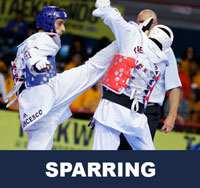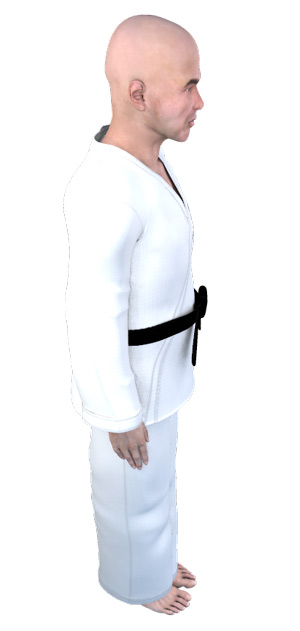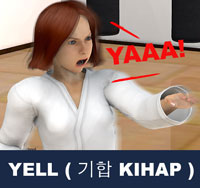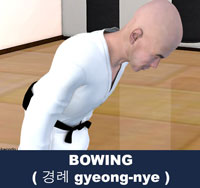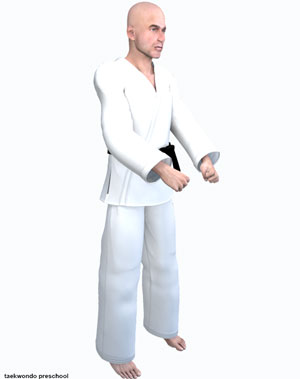Taekwondo 태권도Taekwondo Preschool
Promotion from one geup to the next can proceed rapidly in some schools, since schools often allow geup promotions every two, three, or four months. Students of geup rank learn the most basic techniques first, and then move on to more advanced techniques as they approach first dan. Many of the older and more traditional schools often take longer to allow students to test for higher ranks than newer, more contemporary schools, as they may not have the required testing intervals. View Taekwondo belt levels »
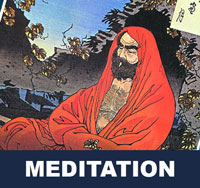
About Meditative Postures
The term meditation refers to a broad variety of practices (much like the term sports) that includes techniques designed to promote relaxation, build internal energy or life force (qi, ki, prana, etc.) and develop compassion, love, patience, generosity and forgiveness.
Various meditative postures have been used in meditation such as sitting cross-legged, sitting on a chair, and standing postures are used. Most well known in the Buddhist and Hindu traditions, as well as in their modern forms, are the full-lotus, half-lotus, Burmese, and kneeling positions. Meditation can also be practiced while walking, or doing simple repetitive tasks, or work which encourages mindfulness.
In taekwondo, usually after the taekwondo class finishes, the master ( 사범님 sabeomnim ) instructs the students to meditate in the dojang in a sitting cross-legged posture. Cooling down, also called warming down, is an easy exercise that will allow the body to gradually transition from an exertional state to a resting or near-resting state. Depending on the intensity of the exercise, cooling down can involve a slow jog or walk, or with lower intensities, stretching can be used. Cooling down allows the heart rate to return to its resting rate.
Students can also meditate in several taekwondo stances ( 서기 sogi ) including the Back Stance ( 뒷굽이 dwi-kubi ) and the Crane Stance ( 학다리서기 hakdari-sogi ). In the Back Stance ( 뒷굽이 dwi-kubi ), one can perform for example the Single Knife Hand Outward Block ( 한손날 바깥막기 hansonnal-bakkat-makgi ) or the Supported Hand Blade Outward Block ( 손날 거들어 바깥막기 sonnal-kodureo-makgi ). The taekwondo student would maintain for long periods of time in the stance ( 서기 sogi ) focusing on the technique and their breathing.
While in the Crane Stance ( 학다리서기 hakdari-sogi ), the taekwondo practitioner can perform the Diamond Block ( 금강막기 keumgang-makgi ). These stances are most commonly seen in taekwondo forms, and are critical for balance, precision, and good technique in the martial art.
Cross-Legged Postures
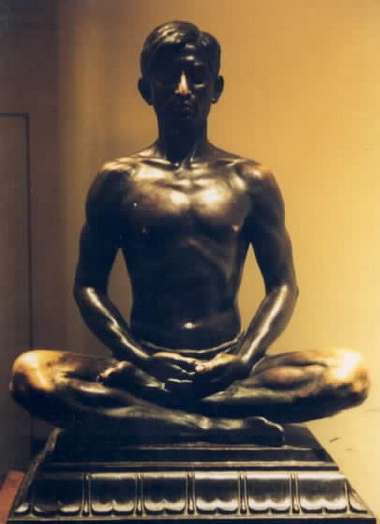
Cross legged sitting helps create a stable base for meditation. Several seated asanas are practiced such as full-lotus, half-lotus, easy crossed legs, or siddhasana ("perfect pose"). Sitting on the heels is possible, among other positions. Seated meditation cushions are often used to help extend meditative time and serve to elevate the hips and spine into proper alignment.
Sitting cross-legged (or upon one's knees) for extended periods when one is not sufficiently limber, can result in a range of ergonomic complaints called "meditator's knee". These are common and may be endured for long periods of time in extensive meditation retreats, however caution is often advised, and the guidance of an instructor or 'guru' is often sought extensively.
In the full-lotus, half-lotus and Burmese positions, used in Buddhism and Hinduism, it is often said that the spinal column must be kept "straight," that is, the individual should sit erect but relaxed, by balancing the torso such that the spinal column supports it in a natural way. One should feel comfortable and rest in a simple and unstrained way.
Sitting on a cushion that elevates the pelvis as high as or higher than the knees and then slightly rolling the pelvis forward makes it easier to keep the spine upright. It is said in multiple traditions that the chin should be slightly tucked in, the tongue pressed against the roof of the mouth, lips lightly pressed together shoulders back.
Those traditions related to kundalini yoga, take a less formal approach. While the basic practice in these traditions is also to sit still quietly in a traditional posture, they emphasize the possibility of kriyas – spontaneous yogic postures, changes in breathing patterns or emotional states, or perhaps repetitive physical movements such as swaying, etc., which may naturally arise as the practitioner sits in meditation, and which should not be resisted but rather allowed to express themselves to enhance the natural flow of energy through the body. This is said to help purify the nadis and ultimately deepen one's meditative practice.
Cross-legged postures, especially those such as the full-lotus, may be difficult due to a lack of familiarization. Most Westerners are not used to sitting in cross-legged positions for extended periods of time. For this reason Westerners are often advised to use a chair or a bench until they are ready for the traditional cross-legged positions. Yoga and stretching also are applicable as a means of developing the flexibility needed for the cross-legged postures.
If practiced routinely and done correctly, full-lotus is easy to maintain for long periods of time without discomfort, as muscular effort is used only keep the spine balanced, and not to support the weight of the torso. Often this posture is explained as a way of encouraging the circulation of what some call "spiritual energy," the "vital breath", the "life force" (Sanskrit prana, Chinese qi, Latin spiritus) or the Kundalini. It is said that one's meditation will not be as good if one's posture is not so good.
Other Postures
In various traditions people meditate by sitting on a chair, flat-footed and without back support (as in New Thought); sitting on a stool (as in Orthodox Christianity); or walking (in Therevada Buddhism); or walking in mindfulness, which is known as kinhin (in Zen Buddhism).
Hand Gestures and Position
Various hand-gestures or mudras may be prescribed in meditation. In Vajrayana Buddhism mudras carry symbolic meaning. According to Yogic philosophy the mudras affect consciousness, mood and energy.
For instance in Buddhist meditation the hands are often held with the right resting atop the left and thumbs touching. Some traditions hold say that each finger is associated with a different sensitivity and that the finger endings, lock into mudras, create subtle energy shifts due to these different energy circuit connections. Pressing on finger endings also stimulates brain sections relating to different qualities – which a practitioner may want to enhance through meditation to invoke specific effects or changes. Other traditions hold that the right on top of left symbolizes the state of samsara while many common depictions of The Buddha have that he holds his left on top of right, due to his enlightenment.
Eye Focus and Gaze
In some schools such as Zen, the eyes are half-closed and half-open, looking slightly downward. In others such as Brahma Kumaris, the eyes are kept fully open. In other traditions the eyelids are kept 1/10 or barely open depending on what drishti the meditation instructs. Drishti refers to eye focus in kundalini yoga and means "vision" or "insight" in Sanskrit. Pictures of saints in meditation may reflect different eye postures, and different meditations may call for staring into a saint's eyes, a candle flame, or some other object of focus, which is known as trataka meditation.
Often such details are shared by more than one religion, even in cases where mutual influence seems unlikely. One example is "navel-gazing," which is apparently attested to within Eastern Orthodoxy as well as Chinese qigong practice. Another is the practice of focusing on the breath, found in Orthodox Christianity, Sufism, and numerous Indic traditions.

Related Articles
Meditation is a practice in which an individual trains the mind or induces a mode of consciousness. The practice has a calming effect and directs awareness inward until pure awareness is achieved, described as being awake inside without being aware of anything except awareness itself. Meditation is often used to clear the mind and ease many health issues, such as high blood pressure, depression, and anxiety. View Meditation »
- History of Mediation - the history is intimately bound up with the religious context within which it was practiced. Around the 6th to 5th centuries BCE, other forms of meditation developed in Taoist China and Buddhist India.
- Definition of Meditation - refers to practices that includes techniques designed to promote relaxation, build internal energy or life force and develop compassion, love, patience, generosity and forgiveness. A particularly ambitious form of meditation aims at effortlessly sustained single-pointed concentration single-pointed analysis, meant to enable its practitioner to enjoy an indestructible sense of well-being while engaging in any life activity.
- Mediation Postures - various meditative postures have been used in meditation such as sitting cross-legged, sitting on a chair, and standing postures. In taekwondo, one can meditate in several stances ( 서기 sogi ) including the Back Stance ( 뒷굽이 dwi-kubi ) and the Crane Stance ( 학다리서기 hakdari-sogi ). One should feel comfortable and rest in a simple and unstrained way.
- Qigong - practice of aligning body, breath, and mind for health, meditation, and martial arts training. With roots in Chinese medicine, philosophy, and martial arts, qigong is traditionally viewed as a practice to cultivate and balance Qi (chi) or what has been translated as life energy.
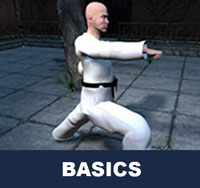
Taekwondo Basics
Here is where you can learn more about Taekwondo 태권도. Knowing the fundamental basics is very important for your learning path as you build your skills and knowledge. There are certain rules that need to be followed to show respect to the master ( 사범님 sabeomnim ), the instructors ( 교사님 gyosannim ), other practitioners and to the martial arts. They vary between schools but many have similar rules and guidelines. For more information View Taekwondo Basics »
There are five tenets defined in the International Taekwondo Federation (ITF) and several more in World Taekwondo (WT).
Integrity ( 염치 yeom-chi ): "Although it may be similar, this form of integrity takes on a more wider role then defined in the common dictionary. In taekwondo, integrity means not only to determine what is right or wrong but also having the conscience to feel guilt if one has done wrong and to have the integrity stand up for what is right." View Taekwondo Tenets »
RESOURCES
This article uses material from the Wikipedia article "Meditation", which is released under the Creative Commons Attribution-Share-Alike License 3.0.



